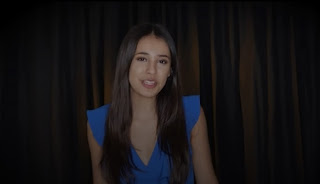The documentary: The First Cut is a reflection on the effects of auditioning for a Batchelor in Fine Arts in college and university. It follows the journey of Martina Rodriguez and how she completed this process despite its challenges. Although this story does not at once relate to social issues such as world hunger it does stand for a part of the working artists of America.
The music, film, theater, dance and entertainment industry has proved over time challenging to enter. Careers as entertainers can be difficult as fame can often be overwhelming for performers. With this documentary we only highlight some of the challenges that come with wanting to peruse a career in the arts. Auditioning for a Batchelor in fine arts is an annual process in which students must complete their senior year to receive the education they need for their careers. A significant issue in the arts sector is pay, particularly for theater performers. Compensation is often low because fewer people are drawn to the arts nowadays. This decline in interest is partly due to the availability of many performances and entertainment options found online. However, shedding light on the early process of how an entertainer can rise to stardom may resonate with others by showing how much work it takes to accomplish those dreams. Earning the respect of others not in the industry can foster empathy and create a better world for tomorrow's performers.
The behind-the-scenes glimpse at the hard work and dedication required to be an artist can evoke empathy in others and engage the audience's emotions. Additionally, Martina's desire for perfection highlights a fundamental aspect of human nature—she ultimately learns to accept that not everything can be perfect. This acceptance reflects the reality that, as humans, our imperfections are what make us unique and special. Creating this understanding of what it is like to be an aspiring artist can lead people to respect the arts more as they see all of the work that goes into becoming an amazing performer.
The main convention addressed in our documentary is the behind-the-scenes aspects that many people may not be aware of or may not fully understand, particularly the prescreen process. Rather than displaying the exciting preparations for a character or a show, the documentary focuses on the more personal journey of preparing for college as an artist and as a person. One important aspect I appreciated is that it is called "The First Cut" and not "The Final Cut," which implies that there is still more of the story to be told and additional content that can be added later. Although it is not intended to be a cliffhanger, this ending piques curiosity and garners support for artists as viewers anticipate where they will end up in their future college lives. While this is not the main purpose of our story, it helps establish a connection with the audience, which is always important for a filmmaker.
After observing people's reactions, I was reminded of the importance of storytelling and effective communication through filmmaking. These reactions proved WHY it is so important to use proper filmmaking and editing techniques when storytelling through any art form.
Reflecting on my entire filmmaking journey, there are several aspects I wish had turned out differently. I would have loved to have more time to include more than one voice in the story. It would have been great to showcase other people's personal journeys alongside Martina's. Given the limited time we had, it would have been nearly impossible to film another perspective that would have had the same emotional impact as Martina's story.
I also found it interesting to note that in "American Promise," the filmmakers tell a personal story similar to "ETTGS," where the director has a personal connection to the narrative. I found it notable that Martina, as a director, was telling her own story. This emphasizes the importance of believing in yourself before expecting others to believe in you. It also conveys the message that everyone has a story to tell, and all that needs to be done is to film it in order to share it with the world. I write about this because it perfectly represents what the prescreen process entails: having the confidence and strength to compete for a spot in a prestigious college program because you believe you are good enough to go farther than you can even imagine in life.
I find that one of my purposes in life is to constantly encourage those around me to find their dreams and pursue them. That’s why The First Cut was such an important story to me. By allowing Martina to showcase how she is achieving her dreams, I hope to inspire others to follow suit. This is my main goal in life right now—apart from passing prescreens.











